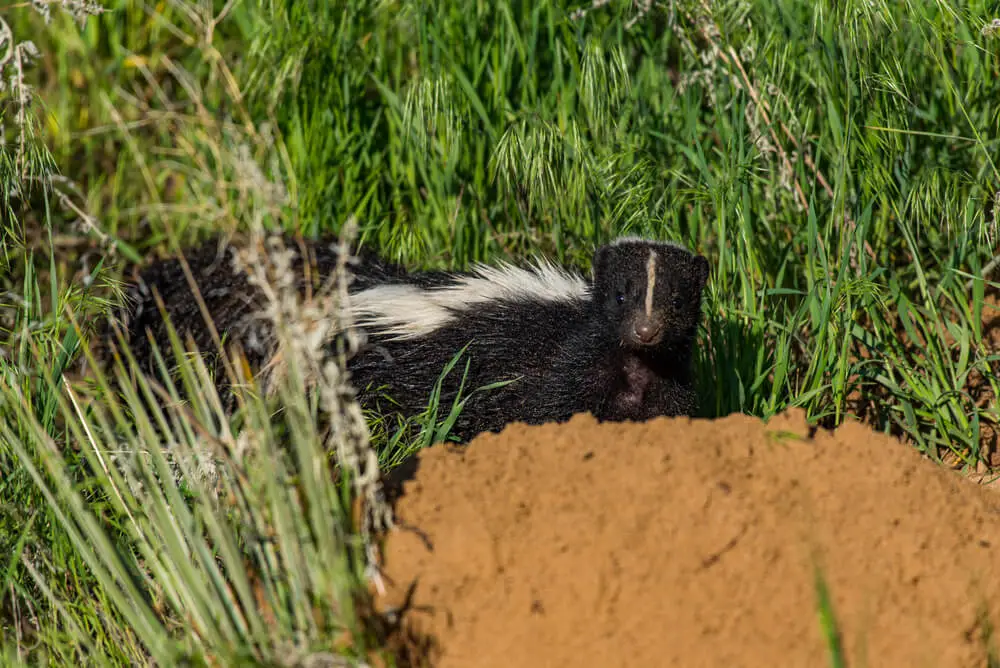Skunks are avid diggers, burrowing holes for both food and shelter. They often dig on grassy topsoil in search of grubs, worms, and other insects to eat. Their digging can occasionally leave your lawn with ugly patches of dead grass and holes about three to four inches deep. It only has a single entrance to help the skunk stay hidden and safe.
Skunks will also burrow dens underground for shelter from the cold weather or predators. A skunk den is typically a small space that tightly fits the animal.
Small holes in your yard or disturbed grass are both indications that a skunk may be residing there. From their noxious skunk spray to their fowl-eating tendencies, skunks can be a nuisance to have around, so it’s essential to know how to identify their dens and get rid of them.
Table of Contents
How do you know if you have a skunk hole?
A skunk hole isn’t hard to spot. If skunk smell doesn’t immediately alert you of their presence, the clustered, small, and shallow holes in the ground probably will.
Skunks make plenty of holes when they’re searching for food. If you see a hole with flipped-up dirt and yellow, dead grass around it, that’s a good indicator that a skunk was around looking for food.
Their dens are also reasonably easy to spot. Skunks usually burrow close to a large object that can serve as protection against the elements and predators. This means they could burrow their home under your porch, shed, or coop.
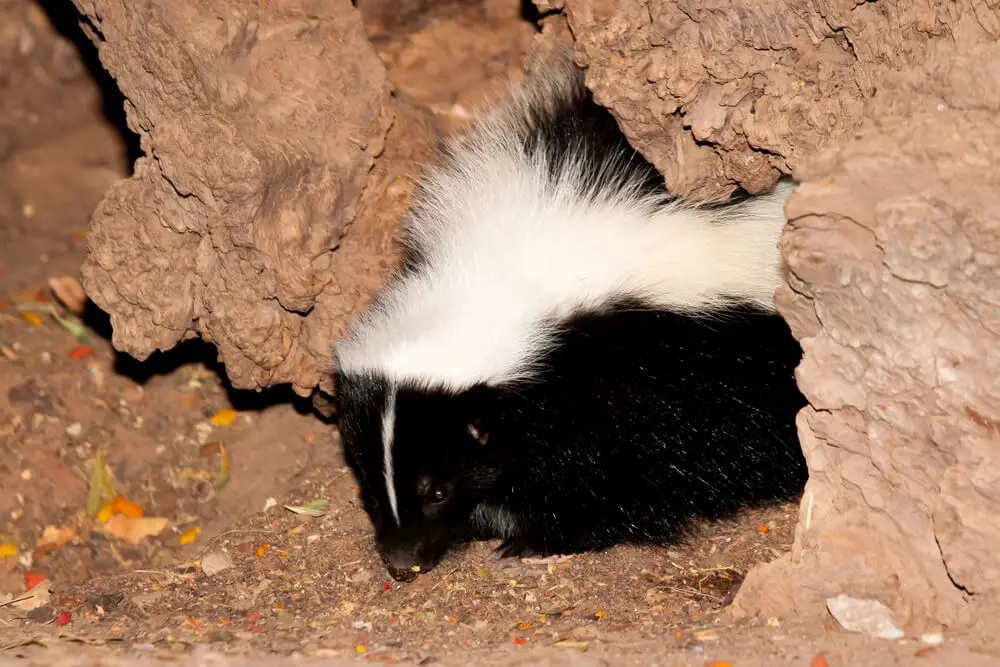
What does a skunk hole look like in the ground?
A skunk produces two types of holes in the ground: grub holes and burrows.
Grub holes are small, clustered, and shallow. They’re usually about three to four inches deep and one to two inches wide. These are the holes that skunks dig when searching for their next meal, like earthworms, larvae, and grasshoppers. The grass around grub holes is typically yellowing and flipped up.
Burrows are larger than grub holes and can be up to two feet deep. These are the dens that skunks use for shelter and are usually hidden by brush or other objects.
Do skunks dig holes to live in?
Yes, skunks dig large holes using their sharp front claws as a form of shelter.
They also dig holes to find food and critters to eat like grubs, worms, and beetles.
However, holes on the ground aren’t their only means of cover. They also take up residence in trees, logs, or abandoned dens made by other animals like raccoons. Sometimes, they’ll even sneak into people’s attics or crawlspaces.
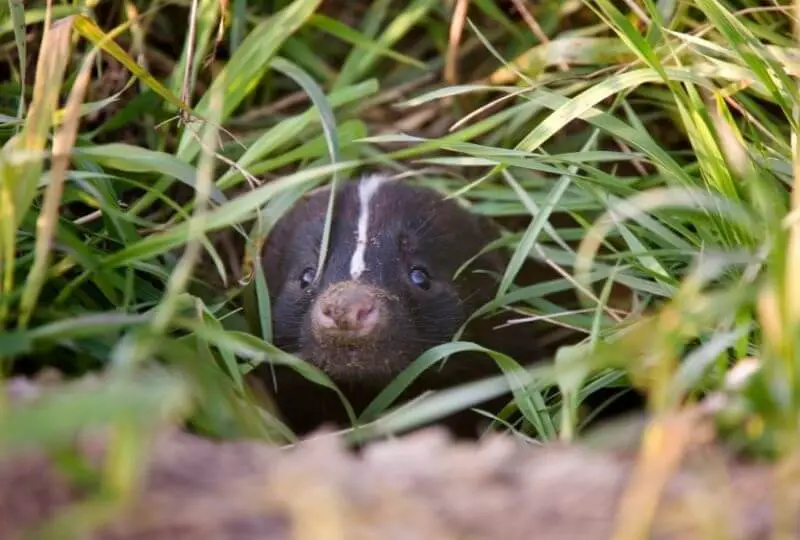
Do skunks burrow?
Yes, skunks burrow holes into the ground for both food and shelter.
A skunk hole is typically about 8 inches in diameter and is quite deep. The skunk will dig the hole with its powerful front legs while its back legs push the dirt out behind it.
Skunks usually dig their holes in areas with soft soil, such as fields or wooded areas. Once the hole is made, the skunk will often return to it after they’ve had their fill foraging for meals. Since skunks are nocturnal animals, you will likely find them resting in their den during the day.
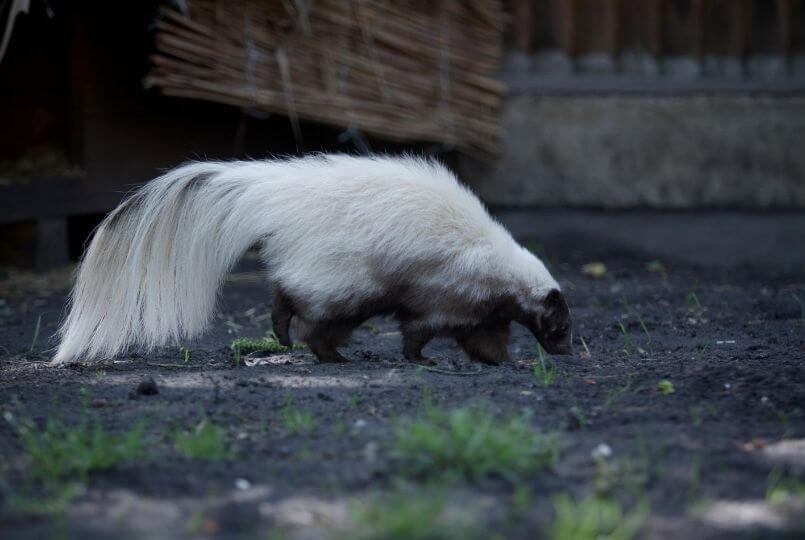
Where do skunks burrow or dig holes?
All types of skunks, from spotted to striped skunks, live in a wide variety of habitats as long as the habitat can satiate their diets. This means you can find them anywhere across North America, from bushy woodlands to suburban landscapes.
In wooded areas, skunks will often find old dens that have been abandoned by other animals, such as foxes or badgers. These dens are typically located in hollow trees, under fallen logs, or in small caves. If an appropriate den can’t be found, they dig their own using their strong claws.
In rare cases, they may find shelter in someone’s lawn, flower beds, or backyard.
If there’s an abundance of food available and no perceivable threats around, skunks may choose to live in these areas instead of venturing into the wild.
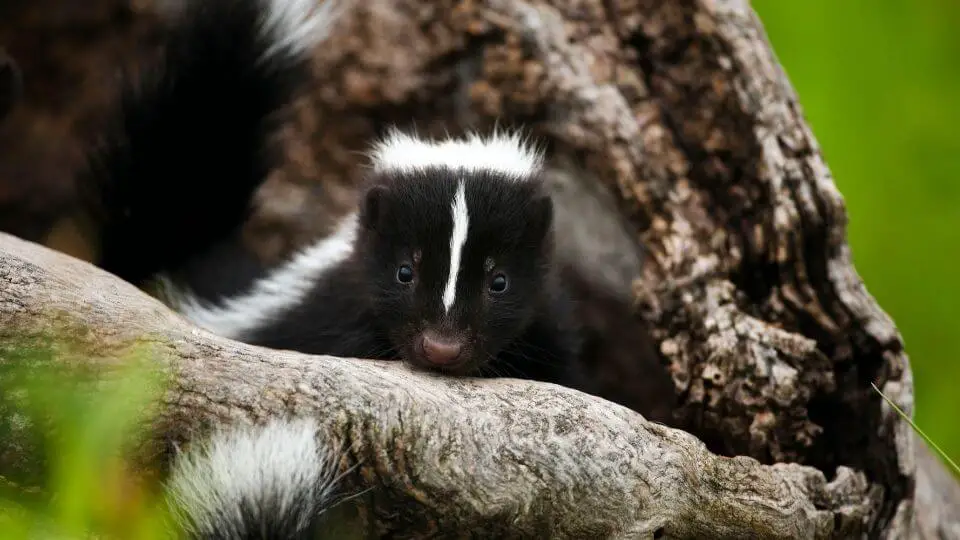
How do you fill a skunk hole?
First, you’ll have to identify and locate the various skunk burrows. Once you’ve done that, enter the vicinity of the den during nightfall. That’s when the skunk is typically away from its den.
If the hole is small enough, simply fill the hole in with loose soil using a shovel. For larger holes, you’ll need to use rocks or logs to block off the opening.
The last, most crucial step is to place up an object with a strong odor, such as:
- Strong–smelling soap
- Ammonia
- Predator urine or droppings
- Mothballs
- Rodent repellent spray
Using any of the products above will deter the skunk from coming back and digging another hole.

Then, observe the hole for a few nights. If there are still signs of a skunky presence, fence the perimeter or contact wildlife control to deal with the pest properly. Also consider setting up a live trap to relocate the skunk.
Bright lights may also prevent further skunk damage due to their highly sensitive eyes.

